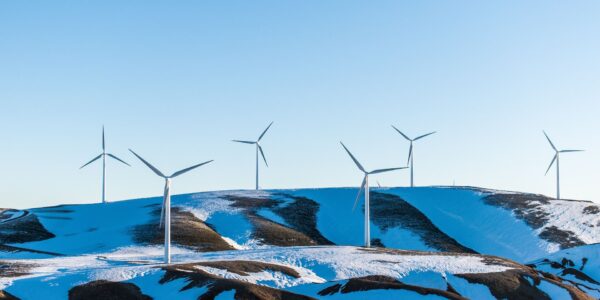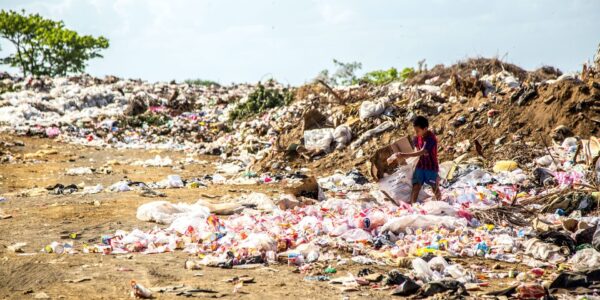

The Sustainable Development Goals (SDGs) are a set of 17 global goals established by the United Nations in 2015. The goals aim to address major social, economic, and environmental challenges faced by the world and guide global efforts towards sustainable development by the year 2030. The SDGs provide a framework for countries, organizations, and individuals to work together to create a more sustainable and equitable world. Let’s discuss all goals:

1. No poverty
The first SDG goal is to end poverty in all its forms and eradicate extreme poverty. Ways this key goal is supported are by providing universal access to basic social services, improving access to sustainable livelihoods and addressing the disproportionate impact of poverty on women.
2. Zero hunger
SDG Goal 2 is focusing on achieving food security, improving nutrition, and promoting sustainable agriculture. One out of three people worldwide face significant challenges when it comes to accessing an adequate and reliable source of food.
3. Good health and well-being
SDG Goal 3 is to ensure healthy lives and promote well-being for all at all ages. This means, for example, access to vaccinations for children or protection against malaria. Major progress has already been made in recent years, such as reducing HIV-related deaths by 52% since 2010.
4. Quality education
SDG Goal 4 advocates for inclusive and equitable education, ensuring that everyone has access to quality learning opportunities and the skills needed for personal and societal development. It promotes lifelong education.

5. Gender equality
SDG Goal 5 targets gender equity, aiming to eliminate discrimination and violence against women and girls, and ensure their full participation in all aspects of society. Women continue to encounter challenges such as limited access to quality employment opportunities, enduring occupational segregation, and facing gender-based wage disparities.
6. Clean water and sanitation
SDG Goal 6 is to ensure availability and sustainable management of water and sanitation for all. It also emphasizes responsible water management to protect ecosystems. For example, in 2022 2.2 billion people lacked safely managed drinking water and nearly 81% of species dependent on inland waters have declined since 1970.
7. Affordable and clean energy
SDG Goal 7 promotes universal access to affordable, reliable, sustainable, and modern energy sources. It encourages energy efficiency and the transition to renewable energy to combat climate change. Even though nearly 30% of electricity is powered by modern renewables, the percentages in transport and heating are still very low (4% and 10%).

8. Decent work and economic growth
SDG Goal 8 aims to foster sustained economic growth, full employment, and decent work opportunities for all. It addresses labor rights, economic productivity, and job creation.
9. Industry, innovation and infrastructure
SDG Goal 9 calls for resilient infrastructure, sustainable industrialization, and innovation to support economic development. It also encourages technology transfer and sustainable practices.
10. Reduced inequalities
SDG Goal 10 focuses on reducing inequalities within and among countries. It aims to address disparities in income, social inclusion, and opportunities, emphasizing the needs of the most vulnerable.
11. Sustainable cities and communities
SDG Goal 11 seeks to create inclusive, safe, resilient, and sustainable cities and human settlements. It addresses urbanization, environmental impact, and access to basic services.
12. Responsible consumption and production
SDG Goal 12 promotes sustainable and efficient use of resources, reducing waste and environmental impact. It encourages responsible consumption and production patterns.

13. Climate action
SDG Goal 13 is to take urgent action to combat climate change and its impacts. It includes mitigation and adaptation strategies to limit global temperature rise.
14. Life Below Water
SDG Goal 14 aims to conserve and sustainably use marine resources and protect oceans and coastal ecosystems from pollution, overfishing, and other threats.
15. Life on land
SDG Goal 15 is to protect, restore, and promote sustainable use of terrestrial ecosystems, sustainably manage forests, combat desertification, halt and reverse land degradation, and halt biodiversity loss.
16. Peace, justice and strong institutions
SDG Goal 16 is to promote peaceful and inclusive societies for sustainable development, provide access to justice for all, and build effective, accountable, and inclusive institutions at all levels.
17. Partnerships for the goals
SDG Goal 17 emphasizes global cooperation and partnerships to support the achievement of all the Sustainable Development Goals. It involves financial and technical assistance, technology transfer, and collaboration between governments, businesses, and civil society.

The importance of the SDGs
The SDGs were created by the United Nations to address the pressing challenges faced by the world and to guide global efforts towards sustainable development. There are several reasons why the SDGs were established:
Reason 1: Global challenges
The world faces complex and interconnected challenges such as poverty, hunger, inequality, climate change, environmental degradation, and social injustice. The SDGs provide a comprehensive framework to address these challenges in a coordinated and integrated manner.
Reason 2: Agenda for sustainable development
The SDGs build upon the Millennium Development Goals (MDGs) that were established in 2000 and expired in 2015. The MDGs focused primarily on poverty reduction, but the SDGs provide a broader and more ambitious agenda for sustainable development, encompassing economic, social, and environmental dimensions. They also emphasize the need for both developed and developing countries to take action, acknowledging that all nations have a role to play in achieving the goals.
Reason 3: Integration and interconnectivity
The SDGs are designed to be integrated, recognizing the interconnections between various social, economic, and environmental issues. They emphasize the need for holistic and systemic approaches to sustainable development, considering the interdependencies between different goals and targets.
Reason 4: Time-bound agenda
The SDGs have a specific timeline, aiming to be achieved by 2030. This time frame provides a sense of urgency and helps focus efforts towards achieving the goals within a defined timeframe.
Reason 5: Monitoring and accountability
The SDGs come with a robust framework for monitoring progress, tracking indicators, and reporting on achievements. This promotes transparency, accountability, and evidence-based decision-making, ensuring that progress towards the goals can be measured and evaluated.
Overall, the SDGs serve as a roadmap for countries and stakeholders to work together towards a more sustainable, equitable, and prosperous future, leaving no one behind. They aim to address the most critical global challenges and build a world that is more inclusive, resilient, and environmentally sustainable.

ecolegIT’s connection to the SDGs
At ecolegIT, we demonstrate a strong connection to the SDGs with an innovative sustainability program for the moving and global mobility industry. With our commitment to environmental stewardship and collaboration, ecolegIT now advances multiple SDGs, working towards a more sustainable and inclusive future.
The Afforestation Project in Panama contributes to several Sustainable Development Goals (SDGs) through its comprehensive approach to sustainable forest management, community development, and environmental protection. Read more on the project page to understand how this project is contributing to goals 1, 8, 12 and 13.

More news

Why Reforestation in Uruguay?
Discover how Cuchilla Grande's mild temperatures and ample rainfall create the perfect setting for trees to flourish and sequester carbon year-round.

Embracing Sustainable Transportation in the Moving Industry
Explore the eco-friendly revolution shaping global mobility in the moving industry. From electric vehicles to green logistics, we're reducing carbon footprints and embracing a responsible future.